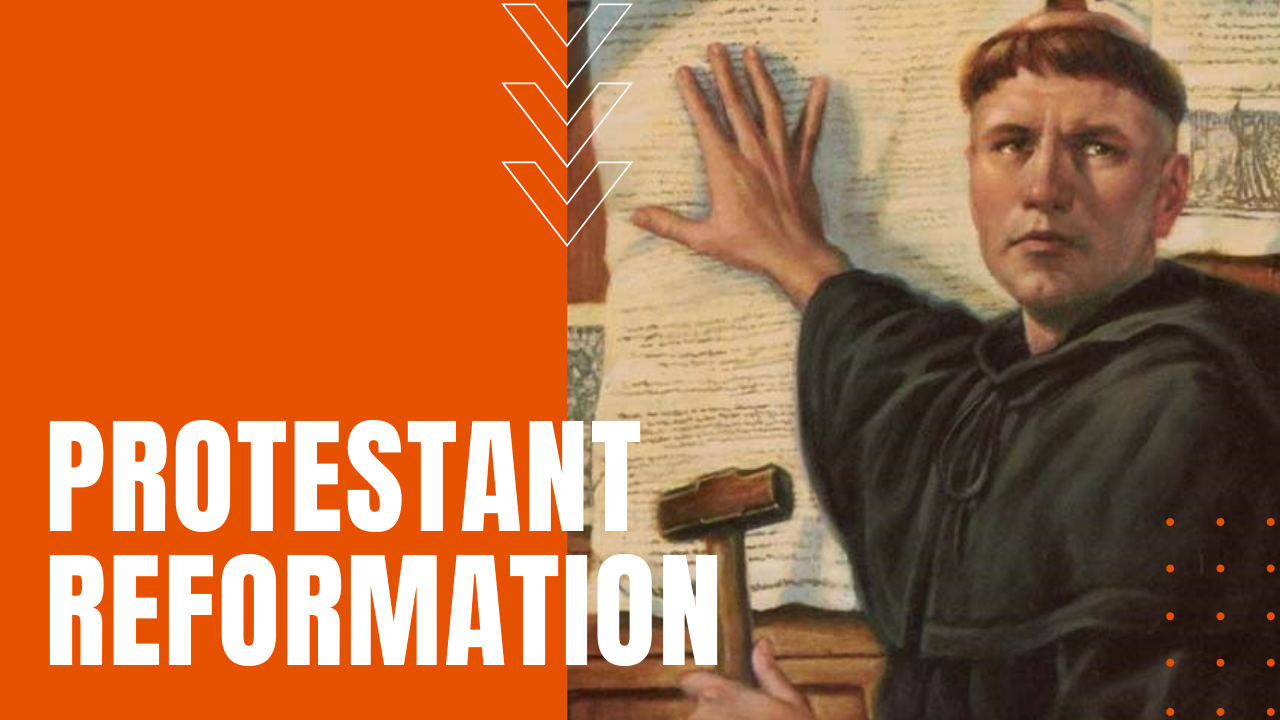The Protestant Reformation

Who Started the Protestant Reformation?
Beginning with the publication of Martin Luther’s “95 Theses” in 1517 and ending anywhere from the 1555 Peace of Augsburg to the 1648 end of the Thirty Years’ War, the Protestant Reformation was led by a string of prolific theological reformers who skillfully employed the power of the printing press, under a common theme of purifying the traditions of the Catholic Church with a more bible-centric source of spiritual authority and guidance.
Catholic Churn
After Martin Luther was excommunicated by the Catholic Church for protesting the pope’s sale of reprieves for dead sinners trapped in purgatory, he was sheltered in Saxony where he translated the Bible into the German for Christians who had grown weary of the non-Biblical corruptions and loopholes pandemic in the Catholic Church.
By the Reformation’s end, Lutheranism had become the state religion throughout Germany, Scandinavia and the Baltics.
Calvinism
Next came the Swiss Reformation beginning in 1519, where Ulrich Zwingli’s sermons closely matched the teachings of Luther, while in 1541, French Protestant John Calvin settled in Geneva after decades in exile for writing his heretical “Institutes of the Christian Religion.”
Calvin stressed humanity’s predestined fate through God’s absolute sovereignty over the salvation of the human soul from death and eternal damnation. His teachings soon spread Calvinism into Scotland, France, Transylvania and the Low Countries, where Dutch Calvinism flourished for the next 400 years.
Protestant Reformation in England
England’s Reformation arose through much less dogmatic considerations, after Pope Clement the 7th refused to annul King Henry the 8th’s marriage to Catherine of Aragon. In response, Henry dissolved the Catholic Church, confiscating all monastic wealth for redistribution to his own coffers as well as the Protestant Church of England.
In 1536, Henry mandated that every parish throughout England was required to have their own Bible, so that every Christian layman could hear and learn the unadulterated word of God. After Henry’s death, Britain embraced Calvinist Protestantism during Edward VI’s six-year reign, followed by five years of reactionary Catholicism under Mary I.
During Elizabeth I’s 44-year reign, she cast the Church of England as a “middle way” between Calvinism and Catholicism, issuing a revised Book of Common Prayer. To counter the threats caused by the Protestant Reformation, a Counter-Reformation or Catholic Revival movement took place in the Catholic Church.
The period ushered in a more spiritual, less corrupt brand of Catholicism, witnessing orders like the Jesuits, who combined rigorous spirituality with globally-minded intellectualism. Despite these latent attempts by the Catholic Church, Europe’s new religious and political freedoms came at an enormously high price, including rebellions, wars and fierce persecutions, at the same time strengthening intellectual expression in education, art and music, making the Protestant Reformation a bold turning point in the religious freedoms of man.
